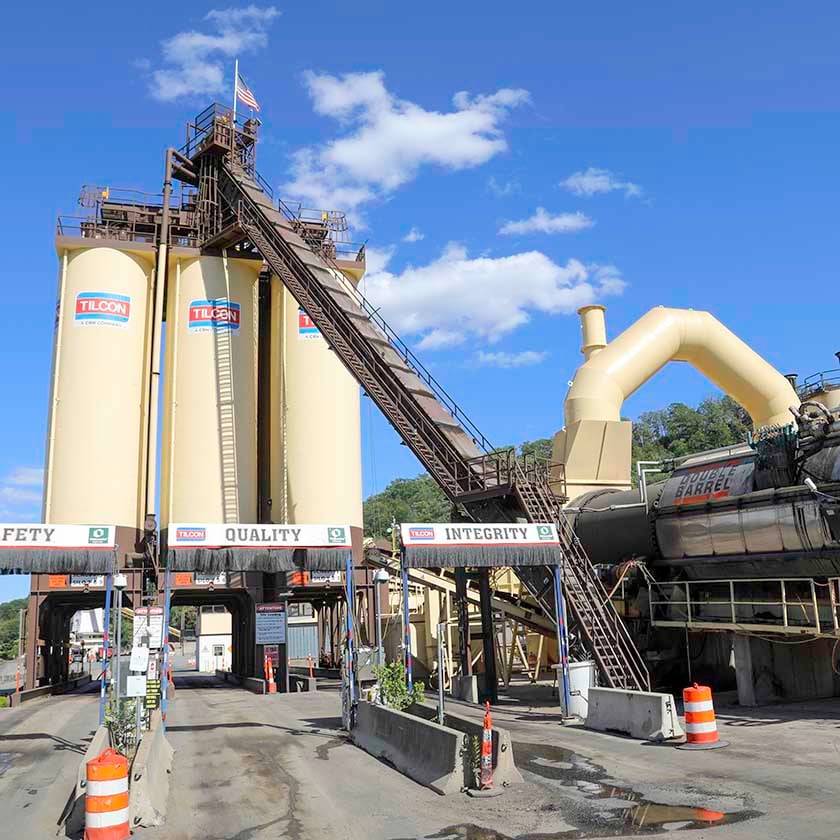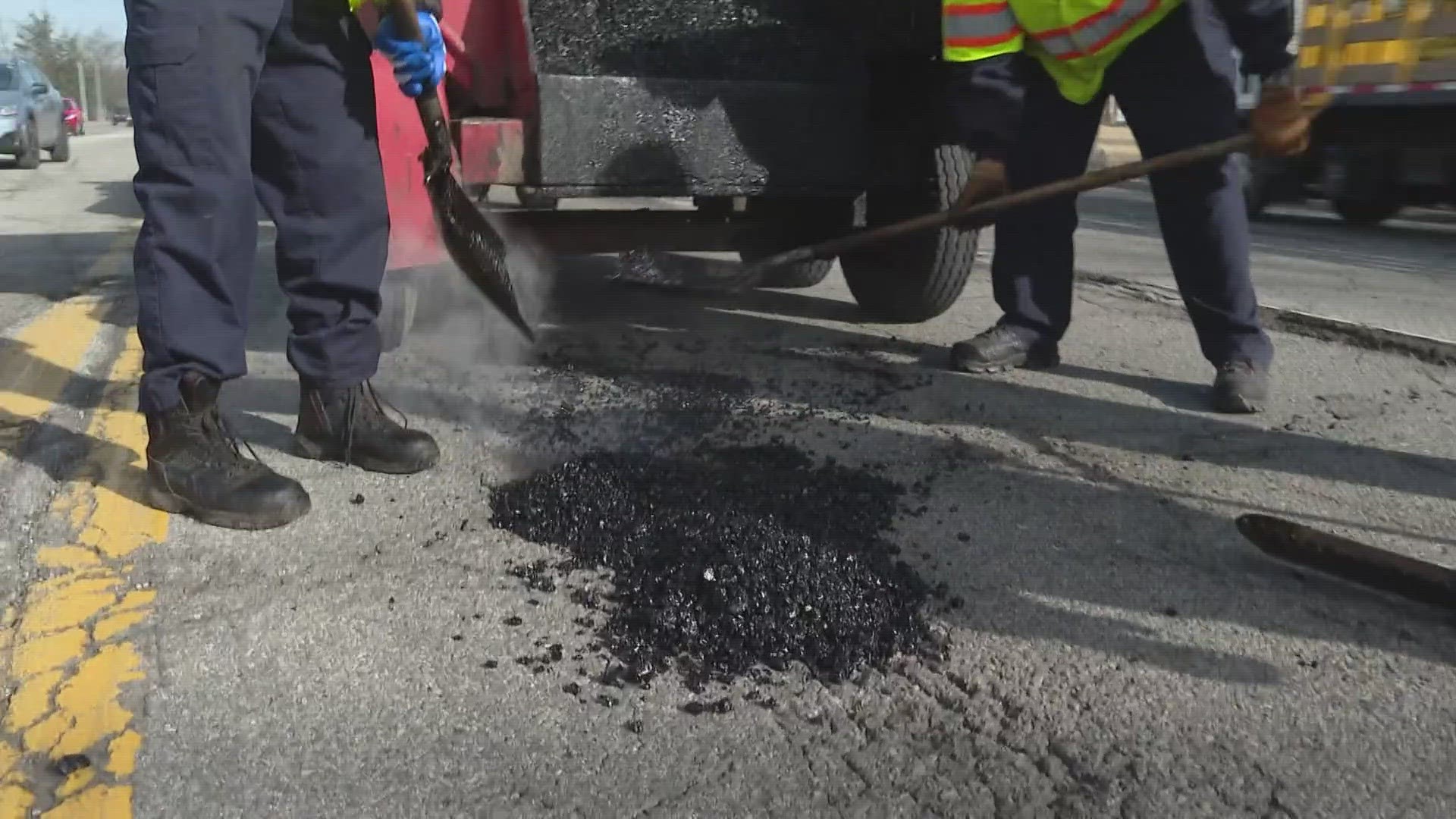Elevate the Look of Your Home with Expert Commercial Parking Great Deal Paving
Elevate the Look of Your Home with Expert Commercial Parking Great Deal Paving
Blog Article
Opening the Tricks of Warm Mix Asphalt Modern Technology
Discovering the midsts of warm mix asphalt modern technology uncovers a globe where precise formulations and careful processes merge to form our roadways and facilities. The combination of fillers, accumulations, and binders isn't simply a building task but a strategic orchestration of sturdiness and effectiveness. As we peer into the intricate dancing of components, a tapestry of resilience and sustainability unravels. What lies beneath this surface area of asphaltic mastery, and what secrets wait to be introduced in the realm of paving technologies?
Importance of Hot Mix Asphalt
Hot Mix Asphalt plays a critical function in modern facilities growth because of its durability and cost-effectiveness. As the most generally used leading product for roads, freeways, and car parking whole lots, Hot Mix Asphalt uses a variety of benefits that add to its relevance in construction jobs. One vital advantage is its capability to hold up against rush hour lots and rough weather problems, giving a lasting and trustworthy surface area for transport networks. In Addition, Hot Mix Asphalt is economical in both first construction and long-lasting upkeep, making it a recommended selection for numerous facilities jobs.
The longevity of Hot Mix Asphalt stems from its composition, which consists of aggregates, binder, and filler products that are very carefully picked and blended to meet details performance requirements. Generally, the significance of Warm Mix Asphalt in facilities growth can not be downplayed, as it proceeds to be a cornerstone of modern-day building and construction methods.
Components of Asphalt Mixes
The structure of asphalt blends is composed of thoroughly picked accumulations, binder, and filler materials that are important for attaining specific performance requirements. Aggregates are the main component of asphalt mixes, supplying toughness and security. The binder, typically bitumen or asphalt cement, holds the aggregates together and offers versatility and sturdiness to the mix.
The mix and percentage of these elements play a substantial duty in establishing the high quality and performance of the asphalt mix. Engineers carefully develop the mix to fulfill specific requirements, taking into consideration factors like traffic volume, climate problems, and sidewalk life expectancy. Correct selection and harmonizing of accumulations, binder, and fillers are essential for creating sturdy, durable asphalt sidewalks.
Combining and Production Techniques

Once the aggregates are selected, the binder, typically asphalt concrete, is contributed to bind the materials together. The binder's high quality and quantity substantially affect the mix's stamina, resistance, and versatility to environmental factors. In addition, fillers like moisturized lime or Rose city cement may be incorporated to enhance details features of the asphalt mix, such as its workability or dampness resistance.
Throughout production, the aggregates and binder are warmed, commonly in between 250-325 ° F(121-163 ° C ), to promote blending and make certain correct finish of the aggregates. The mixing procedure needs to be extensive to achieve an uniform blend that promotes the wanted performance qualities of the asphalt. Various techniques, such as set blending or drum mixing, are used to achieve regular and high-quality asphalt mixes for building and construction projects.
Variables Influencing Asphalt Performance
Factors influencing asphalt efficiency encompass a variety of variables that affect the sturdiness, durability, and total high quality of asphalt sidewalks. One essential variable is the high quality of products web link utilized in the asphalt mix. The kind and source of accumulations, the binder quality, and the additives all play a significant duty in identifying the efficiency of the asphalt pavement. The gradation of accumulations is essential as it influences the mix's resistance, workability, and stability to splitting and rutting.

Design considerations, such as pavement thickness and drain, are essential in ensuring the long-lasting efficiency of the asphalt sidewalk. By meticulously thinking about these factors, professionals and engineers can maximize asphalt efficiency and improve the service life of pavements.
Sustainable Practices in Asphalt Technology

Furthermore, the advancement of warm-mix asphalt (WMA) modern technologies has actually gotten traction in recent years. WMA enables the manufacturing and placement of asphalt mixes at reduced temperature levels compared to traditional hot-mix asphalt, causing reduced energy usage and greenhouse gas exhausts. Additionally, the usage of permeable asphalt mixes can help minimize stormwater drainage problems by allowing water to penetrate through the sidewalk and into the ground, advertising all-natural water filtration and reenergize processes. By applying these sustainable practices, the asphalt market can contribute to developing a more eco-friendly and durable facilities network.
Conclusion
In conclusion, hot mix asphalt innovation plays a crucial role in modern facilities advancement because of its longevity and cost-effectiveness. By thoroughly balancing elements, utilizing appropriate blending methods, and taking into consideration numerous variables, designers can develop high-grade asphalt blends that hold up against hefty website traffic lots and rough climate condition. Accepting sustainable practices, such as using warm-mix technologies and recycled products, better improves the environmental friendliness of asphalt technology.
Blending and manufacturing strategies in warm mix asphalt innovation include the precise mix and handling of aggregates, binder, and fillers to create a durable and high-performance asphalt mix.Variables influencing asphalt performance incorporate a variety of variables that impact the durability, durability, and general quality of asphalt sidewalks. Sustainable techniques in asphalt innovation encompass numerous efforts aimed at lowering the environmental influence of asphalt manufacturing and paving processes. By including recovered asphalt sidewalk (RAP) and recycled asphalt tiles (RAS) right into new asphalt blends, the market can significantly minimize the consumption of raw products and energy, while likewise decreasing garbage dump waste.
WMA allows for the manufacturing and positioning of asphalt mixes at see this here reduced temperature levels contrasted to conventional hot-mix asphalt, resulting in lowered energy usage and greenhouse gas emissions.
Report this page